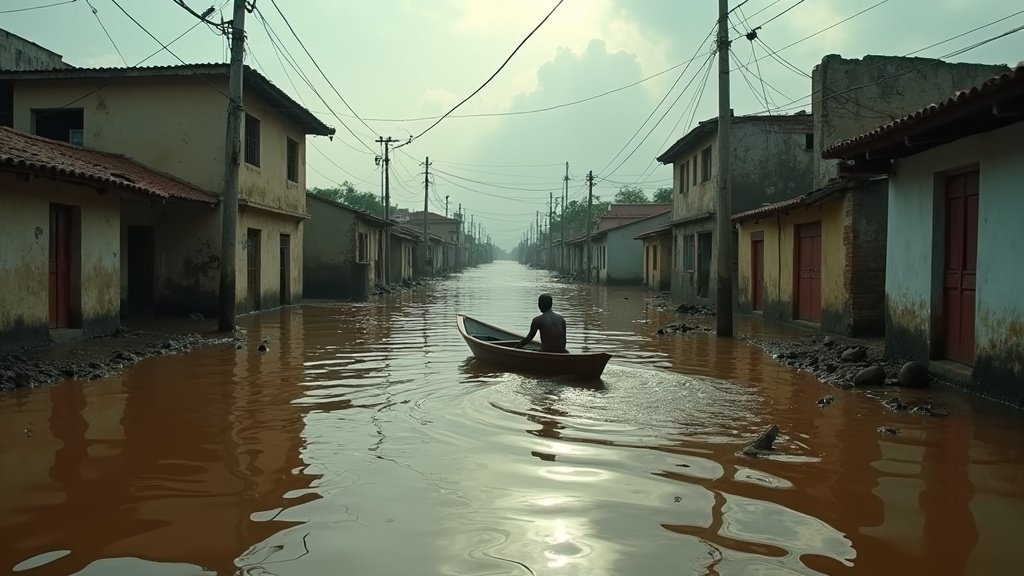Tropical Storm Melissa Drenches Caribbean: Haiti, Dominican Republic Face Severe Flooding; Jamaica on Alert, Travel Disruptions Expected
Tropical Storm Melissa has unleashed torrential rainfall across parts of Hispaniola and is posing a significant flood risk throughout the northern Caribbean, prompting urgent preparations and warnings in Haiti, the Dominican Republic, and Jamaica. The storm, the 13th named system of the Atlantic hurricane season, is currently moving slowly through the central Caribbean Sea, with forecasters monitoring its path and potential for further intensification.
Storm Intensifies, Path Remains Uncertain
As of Wednesday evening, Tropical Storm Melissa was located approximately 305 to 335 miles south-southeast of key Caribbean capitals, including Port-au-Prince, Haiti, and Kingston, Jamaica. With maximum sustained winds hovering around 50 mph, the storm is characterized by its slow westward or west-northwestward movement, often crawling at speeds as low as 2 mph. Meteorologists at the National Hurricane Center (NHC) are closely tracking Melissa, with forecasts indicating gradual strengthening. Some projections suggest Melissa could develop into a hurricane by Friday or over the weekend, with a concerning possibility of reaching major hurricane status by early next week.
Despite the storm’s current strength, its precise track and future intensity remain subject to considerable uncertainty. This lack of clarity means that areas beyond the immediate impact zone must remain vigilant. Models show diverging possibilities, with some suggesting a turn northward towards Hispaniola or Cuba, while others indicate a potential stall or westward drift south of Jamaica.
Torrential Rains and Heightened Flood Risks
The most immediate and significant threat posed by Tropical Storm Melissa is its capacity to produce extremely heavy rainfall. Forecasters anticipate 5 to 10 inches (125 to 250 millimeters) of rain across southern Haiti and the southern Dominican Republic through Friday, with isolated areas potentially receiving even higher amounts. Several inches of rain are also expected in Jamaica, with lesser, though still impactful, amounts forecast for northern Hispaniola, Aruba, and Puerto Rico.
This deluge is raising serious concerns about widespread flash flooding and landslides, particularly in the mountainous and erosion-prone regions of Haiti and the Dominican Republic. The risk is compounded by the storm’s slow movement, which could lead to prolonged periods of heavy rainfall over already saturated ground. Officials are warning of potential power outages and roads being washed out, critical infrastructure disruptions that could exacerbate the crisis.
Governments Mobilize, Residents Seek Shelter
Authorities across the affected nations have initiated emergency responses. In the Dominican Republic, President Luis Abinader announced that schools in nine provinces under alert would close for Wednesday and Thursday. Additionally, the public sector and non-essential private businesses in these regions were ordered to close by early Wednesday afternoon. Dozens of residents in the southern Dominican Republic have already been moved to shelters, with approximately 500 voluntary rescue personnel deployed to assist. Tragically, dozens of water supply systems are already out of service, impacting over half a million customers.
Haiti is under a Hurricane Watch for its southwestern peninsula, stretching from the Dominican Republic border to the capital, Port-au-Prince. Officials are urging residents in flood-prone areas to seek higher ground, a critical warning given the country’s history of devastating flood impacts from past storms.
Jamaica is currently under a Tropical Storm Watch, with emergency management teams on full alert. The island has made 881 shelters available as needed, and residents are being advised of the potential for heavy rainfall, gusty winds, and flash flooding, particularly in eastern parishes. The potential for landslides in mountainous areas is also a significant concern.
Travel Disruptions Loom for Tourists
The escalating weather situation poses significant challenges for travel and tourism in the region. Airlines and tour operators are closely monitoring Melissa’s development, with potential for flight cancellations and delays impacting popular destinations such as Haiti, the Dominican Republic, and Jamaica. Popular tourist hubs, including Port-au-Prince, Punta Cana, and Santo Domingo, are particularly vulnerable to flash floods, which could severely disrupt local travel and tourist activities.
Tourists planning trips to the Caribbean are strongly advised to stay informed about the storm’s progress through official weather updates and to heed guidance from local authorities. Swells generated by Melissa are expected to affect Hispaniola, Jamaica, and eastern Cuba, potentially complicating travel and adding to hazardous sea conditions.
Continued Vigilance Essential
As Tropical Storm Melissa continues its slow trek across the Caribbean, the immediate focus remains on the severe rainfall and flooding threats to Hispaniola and Jamaica. The uncertainty surrounding its future track and intensity underscores the need for all residents and visitors in the wider Caribbean region to remain vigilant, stay informed, and complete all necessary preparations to protect life and property.

